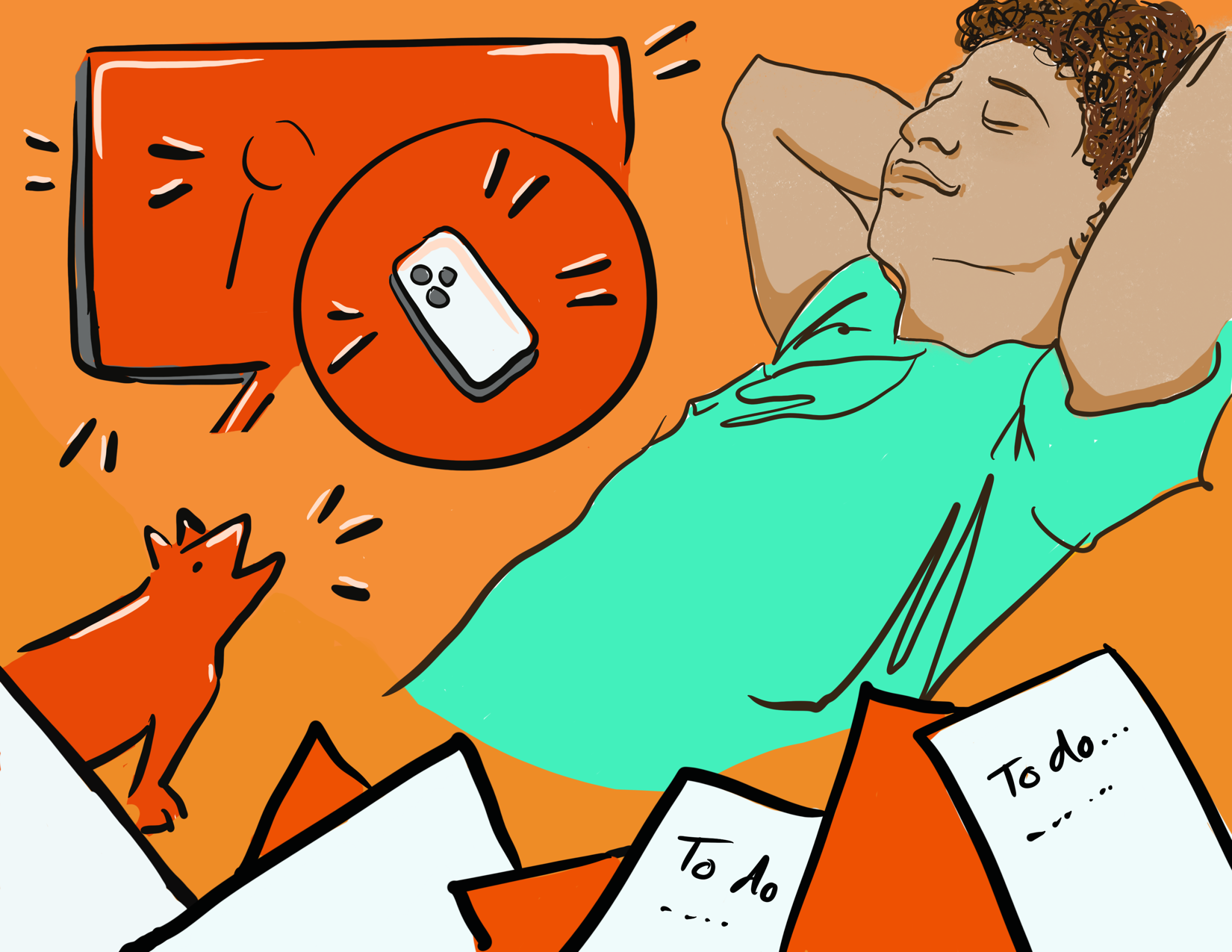Chapter 17. Well-being
Well-being Introduction
Jessica Motherwell McFarlane
Approximate reading time: 6 minutes
Comic

Dr J’s Story: Embracing Well-Being in the Midst of Lockdown
On March 17, 2020, as the world around me began to close its doors and retreat into COVID 19 lockdown, I found myself stepping into a new reality. There I was, in my home on the West Coast of Canada, with my husband and our two cats, facing a reality that seemed to shift with each passing day. The courses I had been passionately teaching were now pivoting to Zoom. The professional development workshops I had planned were abruptly cancelled. My in-person counselling clients also had to shift to online sessions. The world as I knew it was changing, and a long, stressful journey lay ahead, marked by a rising tide of infections and a death toll that seemed to climb relentlessly.
In the midst of this unfolding chaos, I felt a deep need to anchor myself and find a beacon of light in the darkness. It was then that I decided to enrol in Dr. Laurie Santos’s The Science of Well-Being free online course at Yale University. My choice was partly driven by my curiosity and a desire to peek into the award-winning lesson plans of the most popular psychology course on the planet. But little did I know, this decision would become a rising tide that would give me some buoyancy in the dark, sinking times of the pandemic.
Eager to share this experience, I extended an invitation to some of my colleagues: my sister, friends, and nieces, to join me in this learning adventure. Without a study group to help keep me on track, I knew I might not have the dedication to finish the course on my own. We formed a study group, a virtual gathering where we could learn about happiness and stress reduction while staying connected. Not all of us stayed in the course, but our discussions about the videos and assignments kept us engaged and connected. We became each other’s long-distance social support group, a circle of care and learning that extended beyond the confines of our individual lockdowns. Some of us even joined a gentle stretch class online so we could stay physically active. And the time we spent learning with each other kept us from watching the never-ending bad news about the rising number of COVID 19 infections in the province.
Our Zoom-based study group became a haven of routine, casual conversation, and constructive advice. We delved into the science of positive psychology and stress reduction. We found solace and strength in shared experiences and insights. Our group, born out of a need for connection in a time of isolation, brought a sense of normalcy and added some joy to our days. It was a reminder that even in the darkest times, there are opportunities for growth, learning, and connection.
As the course progressed, I found myself deeply immersed in the lessons, applying the principles of well-being to my own life. The “rewiring the brain” exercise and data collection was transformative, leading me to a deeper understanding of how I can cultivate gratitude amidst adversity. In the end, I even chose to pay the extra fee to receive a certificate of completion, proof that I finished a course at Yale.
Writing this chapter on well-being has reminded me of some of my experiences during lockdown. The themes in this chapter mirror my personal lockdown experiences of loss, disruption, fear, and loneliness. But I was also reminded of some of the positive experiences I had during lockdown — learning new health-giving skills and receiving the social support of my friends and family as we studied Dr. Santos’s The Science of Well-Being during unprecedented times.
In this chapter on well-being, we’ll explore the science of well-being in ways that you may find applicable to your everyday challenges and stresses. This isn’t just about academic theories; it’s about real tools that you can use to navigate your personal experiences. We’ll look at simple, yet powerful strategies that can help you find balance and happiness, even when times are tough. I’m excited to share these insights with you, not just as a teacher/author, but also as someone who has been applying these lessons in daily life. This well-being journey is about transforming understanding into action. It’s an opportunity for us all to grow, not just intellectually, but in ways that make a tangible difference in how we live and interact with the world around us.
Image Attributions
Figure WB.1. Well-being by Marie Bartlett is licensed under a CC BY 4.0 license.
To calculate this time, we used a reading speed of 150 words per minute and then added extra time to account for images and videos. This is just to give you a rough idea of the length of the chapter section. How long it will take you to engage with this chapter will vary greatly depending on all sorts of things (the complexity of the content, your ability to focus, etc).

